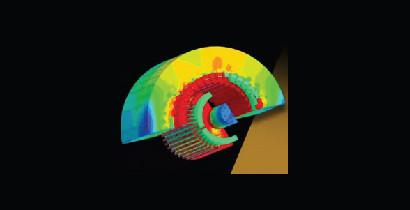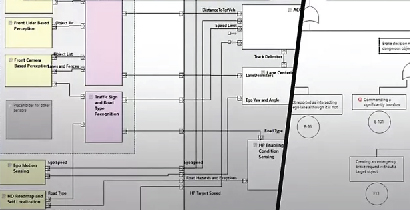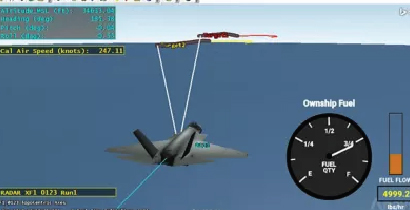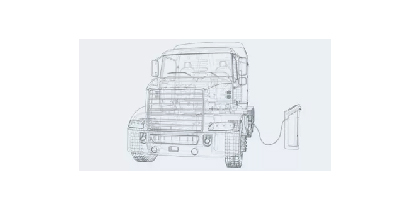- PRODUCTS
- SERVICES
- HARDWARE & IT
- LEARNING & DEVELOPMENT
- CADFEM INFORMS
CADFEM INFORMS OVERVIEW
- ABOUT US

Functional Safety analysis is a systematic approach used to identify, access and mitigate risks associated with the functional behavior of safety-critical systems. Key aspects of functional safety analysis include hazard identification, risk assessment and the implementation of safety measures to reduce the probability and severity of accidents and injuries. Functional safety analysis is crucial for ensuring that safety-critical systems meet the required safety integrity level (SIL) and comply with relevant standards and regulations, such as ISO 26262, ARP 4761, ISO 21434, ISO 21448, IEC 61508, MIL-STD-882E

Ensuring compliance for Enhanced system Integrity.
We are providing a comprehensive consulting services for safety compliance with ISO 26262, ARP 4754/4761, ISO 21434, ISO 21448, IEC 61508, MIL-STD-882E.

Defining scope of safety-critical system.
We are providing solutions for a basic architectural development and top level functionalities development in compliance with safety standards for a safety-critical applications.

Safeguarding system integrity with operational situations.
We specialize in providing top-notch solutions for Hazard Analysis and Risk Assessment (HARA) in compliance with ISO 26262. HARA is a fundamental process in functional safety, involving the systematic identification of potential hazards, analysis of their causes and effects, and assessment of associated risks to safety-critical systems or products. This critical process ensures that safety-critical systems meet the required safety objectives and standards.

Defining safety-critical requirements for system integrity in different levels.
Our solutions for Safety Goals and Requirements (SG & SR) modelling comply with ISO 26262. SG & SR modelling is a structured approach used throughout the development lifecycle of safety-critical systems. Safety goals represent high-level objectives related to system safety, such as minimizing the risk of harm to users, passengers, or the environment. These goals, derived from safety standards and hazard analysis, are complemented by safety requirements, which detail the functionality, performance, and constraints necessary to ensure safe operation. Safety requirements encompass various aspects such as functional safety, hardware safety, software safety, and operational safety.

Predictive analysis for E/E components to Ensure system reliability.
We offer comprehensive solutions for reliability analysis of all E/E systems, adhering to all relevant safety standards. Reliability prediction for HW E/E components involves defining the failure modes of the component, distribution of the failure modes, and failure rate calculation using different failure rate catalogs tailored for various industries.

Risk mitigation strategies to harnessing FMEA for Enhanced safety.
Our expertise extends to qualitative safety analysis, including Failure Mode and Effects Analysis (FMEA) and Failure Mode, Effects, and Criticality Analysis (FMECA), in compliance with all safety standards. FMEA is a systematic approach to identify and mitigate potential failure modes within a system, product, or process, enhancing reliability and safety. FMECA goes a step further by assigning criticality rankings based on factors such as severity, system mission or function, and the likelihood of failure occurrence.

Root Cause analysis for Navigating systems with using Fault tree analysis.
We provide advanced solutions for both qualitative and quantitative Fault Tree Analysis (FTA) in accordance with all safety standards. FTA is a deductive technique used to identify and analyze potential causes of system failures. It involves constructing a graphical representation called a fault tree to model relationships between various events and their potential outcomes, using logical gates such as AND, OR, and NOT to trace intermediate events leading to the top event.

Accessing component & Failure mode reliability for a Safety-critical systems.
Our solutions encompass Failure Modes, Effects, and Diagnostic Analysis (FMEDA) in compliance with ISO 26262. FMEDA is a systematic and quantitative method used to assess the reliability of complex systems. This analysis involves identifying potential failure modes, understanding their effects on system performance, and evaluating the effectiveness of diagnostic measures using SPFM and LFM techniques.

Building Resilience with using Reliability block diagrams.
We offer solutions for various quantitative analyses, including Reliability Block Diagram (RBD) in compliance with all safety standards. RBD is a graphical representation used to model and analyze the reliability of complex systems by depicting relationships between components or subsystems and their contribution to overall system reliability. The blocks are connected in series, parallel, or a combination of both, reflecting the system’s configuration and inter-component relationships.

Understanding system malfunctions or Analyzing dependencies of a system.
Our services include Dependent Failure Analysis (DFA) in compliance with ISO 26262. DFA assesses the potential for failures within a system that may be influenced by other failures. This analysis helps engineers identify critical failure modes, assess their impact on system reliability and safety, and implement appropriate mitigation measures, ensuring the robustness and reliability of complex systems by addressing potential failure scenarios and their interdependencies proactively.


